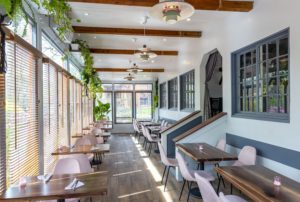 The restaurant world is high steaks and boils down to one thing – location, location, location! The success of a restaurant is like the punchline to a good joke; it depends on where you tell it.
The restaurant world is high steaks and boils down to one thing – location, location, location! The success of a restaurant is like the punchline to a good joke; it depends on where you tell it.
You see, choosing the right spot for your restaurant is as essential as having a secret sauce. One of the primary reasons for the importance of restaurant location is accessibility and visibility. A well-located restaurant is easily accessible to potential customers and highly visible to passersby. Standalone restaurants, for example, often benefit from being situated on a busy street or at the intersection of popular roads. Their visibility can attract foot traffic and entice new customers to step inside. In contrast, a restaurant tucked away in a nondescript location may struggle to attract customers, even if it offers exceptional food and service. Strip malls, on the other hand, can provide visibility through shared signage and proximity to other businesses, which can be beneficial for samaller establishments.
Understanding your target audience is essential when choosing a restaurant location. The demographics of the area, such as age, income, and lifestyle, should align with the type of cuisine and dining experience your restaurant offers. For instance, a high-end fine dining establishment may thrive in an affluent neighborhood, while a casual family restaurant may do better in a residential area. The level of competition and market saturation in a particular location is another critical factor. Restauranteurs must consider the overall saturation of the market. In densely populated urban areas, competition can be fierce, but the diverse customer base can also present opportunities.
In strip malls and shopping centers, restaurants often benefit from the presence of anchor tenants like grocery stores or movie theaters, which can drive foot traffic to the area. However, they may also face direct competition from neighboring eateries, and it’s crucial to assess the variety and quality of dining options nearby.
The cost of rent or real estate purchase is a significant factor in the restaurant industry. The restaurant’s location often determines the rent or property price. Standalone restaurants in prime locations may have higher costs, but the increased customer traffic can justify the investment. Strip mall locations, on the other hand, may offer more affordable leasing options, but the trade-off might be a more limited customer base.
Restaurant owners must also be aware of zoning regulations and local ordinances that could affect their chosen location. Different areas may have specific rules regarding operating hours, alcohol sales, outdoor seating, and signage. Failure to comply with these regulations can result in fines or even the closure of the restaurant.
The importance of the location cannot be overstated, as it plays a pivotal role in a restaurant’s overall success. Whether it’s a standalone restaurant, part of a strip mall, or situated in a busy urban center, choosing the right location is a complex decision that involves careful consideration of accessibility, visibility, target audience, competition, cost, and local regulations.
Restaurant owners looking to find their perfect location should reach out to the Blue Orbit team. We specialize in market research and feasibility studies to help you pinpoint the best spot for your establishment.
